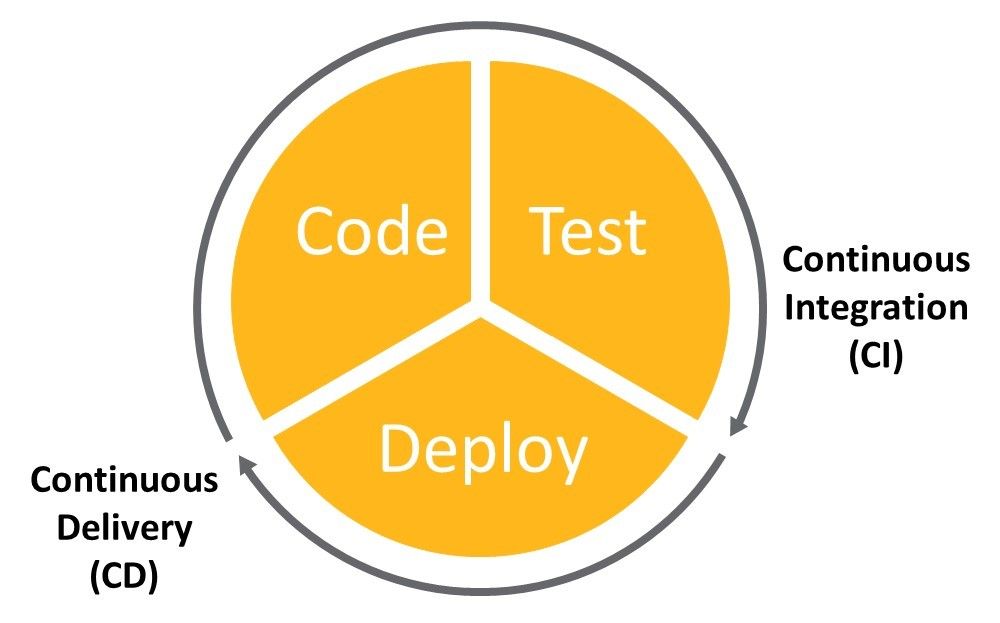Unit Testing#
Unit tests validate the software by testing that the logic implemented inside a certain method, class, or module is working as expected. They should be as atomic and independent as possible.
Unit testing is highly important. The tests check that code changes are consistent with other parts of the code and verify that these changes are implemented properly.
Unit tests are in the tests directory in this repository, along with integration tests. The difference between a unit test and an integration test is that the latter tests several units of the code to ensure that they all work together.
To verify that all code is properly tested, you must ensure that every piece of code is used (covered) in at least one unit test. In this repository, the Codecov tool generates a coverage report of the committed code. It details how merging a pull request would impact coverage. It is one of the checks that must run successfully to merge code changes.

Coverage example#
To show how the coverage works, assume that you have this library:
My awesome library
def get_report_colors(theme):
if theme == "weather":
colors = ["blue", "lightblue", "grey"]
elif theme == "traffic":
colors = ["red", "orange", "yellow"]
else:
colors = ["red", "blue", "green"]
return colors
Tests
You can opt to run the tests with this configuration:
def test_get_report_colors():
assert get_report_colors("weather") == ["blue", "lightblue", "grey"]
assert get_report_colors("traffic") == ["red", "orange", "yellow"]
assert get_report_colors("other") == ["red", "blue", "green"]
Or, if a method is a bit more complex, you can split the case in different tests:
def test_get_report_colors_weather():
assert get_report_colors("weather") == ["blue", "lightblue", "grey"]
def test_get_report_colors_traffic():
assert get_report_colors("traffic") == ["red", "orange", "yellow"]
def test_get_report_colors_other():
assert get_report_colors("other") == ["red", "blue", "green"]
While the code coverage in either case is 100% for the function, the second case is more useful for debugging the function.
Continuous Integration and Continuous Deployment (CI/CD) approach#
Unit tests and integration tests are part of Continuous Integration (CI). The automation of testing, monitoring, and deployment of newly added code allows Continuous Deployment (CD) throughout the application lifecycle, providing a comprehensive CI/CD approach.

Creation of a unit test#
In the PyMAPDL repository, pytest is used to run tests.
The name of a pytest file must be in the form test_XXX.py, where XXX
is either the function, method, or class that you are testing or some other explicative
name. In the command line, the -k argument can be used to filter the tests to run.
For more information, see pytest usage.
Here are some guidelines for creating good unit tests:
Assign long and descriptive names to tests.
Use the Codecov tool to ensure all implemented code is tested.
Check that tests return the same results each time.
Verify that tests are independent.
Write tests that verify only one part of the code at a time.
Make tests as short and fast as possible.
What makes a good unit test is an exhaustive list of tips for creating good unit tests.
Most PyMAPDL tests require a connection to a running instance of MAPDL, which makes them integration tests. If your test requires a running MAPDL instance, you can use the PyMAPDL mapdl method in your function signature. It will be executed upstream of each test and not within all tests.
def test_my_new_feature(mapdl): # pass the 'mapdl' fixture as an argument.
mapdl.prep7()
# .... more code
return True # if everything goes ok until here
Example#
The test_component.py file contains
the unit tests and integration tests of the
ComponentManager.
These are just some of the many tests that you can find in the
test directory.
Here are some examples of how you use pytest:
import pytest
# 'cube_geom_and_mesh' is another fixture defined in 'conftest.py'
@pytest.fixture(scope="function")
def basic_components(mapdl, cube_geom_and_mesh):
"""Given a model in 'cube_geom_and_mesh', let's define some components to work with later."""
mapdl.components["mycomp1"] = "NODE", [1, 2, 3]
mapdl.components["mycomp2"] = "KP", [1, 3]
mapdl.cmsel("s", "mycomp1")
mapdl.cmsel("a", "mycomp2")
def test_dunder_methods_keys(mapdl, basic_components):
assert ["MYCOMP1", "MYCOMP2"] == list(mapdl.components.list())
def test_dunder_methods_types(mapdl, basic_components):
assert ["NODE", "KP"] == list(mapdl.components.types())
def test_dunder_methods_items(mapdl, basic_components):
assert [("MYCOMP1", "NODE"), ("MYCOMP2", "KP")] == list(mapdl.components.items())
For further explanations, see the pytest documentation.